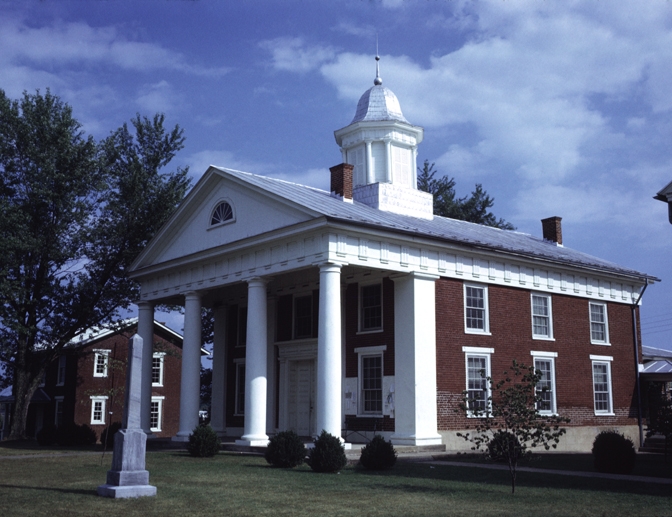Review of Selected Assumptions Underlying the Proposed Greene County Water and Sewer Financial Model

Title of Project: Review of Selected Assumptions Underlying the Proposed Greene County Water and Sewer Financial Model
Project Period: November 2024 - January 2025
Locality: Greene County, Virginia
Funding Source(s): Greene County, Virginia
Principal Investigator (PI): Dr. David Moore, Director of Strategic Partnerships, VTIPG
Co-Investigators:
- Dr. Sheryl Bailey, Visiting Professor of Practice and Adjunct Faculty, VTIPG
- Dr. Bernice Owusu-Brown, Research Scientist, VTIPG
- Olabisi Akinwunmi, Graduate Research Assistant, VTIPG
Key Community Partners: Greene County, Virginia
Description of Project:
The Virginia Tech Institute for Policy and Governance (VTIPG) conducted a limited review of the housing start assumptions used for the proposed Greene County Water and Sewer Financial Model, which underlie the collection fee projections in the model, with the associated research and analysis of relevant county and external factors. To this end, the VTIPG project team reviewed the detailed history of the water reservoir project and the Equivalent Dwelling Unit (EDU) (or connection fee) process supporting the water and sewer system in Greene County, Virginia.
After this review of the history, the team reviewed each project and associated planning documents on the listing of housing projects with current activity provided by the county, including those inside and outside of the estimates used for the Water and Sewer Financial Model. To contextualize the research, the team conducted a one-day site visit to examine each of the housing projects with current activity as identified by the county, including those inside and outside of the estimates for the Water & Sewer Financial Model, the water treatment plant, and the site of the proposed water reservoir.
To better understand how the financial model used the housing start assumptions, the team reviewed the Water and Sewer Financial Model with the county’s municipal advisor to develop a full understanding of the model’s methodology and findings; however, we did not conduct a financial analysis or financing plan assessment since VTIPG is not a licensed and registered municipal advisor. Finally, the team reviewed a range of relevant national, state, regional, and local demographic and economic trends and carefully selected indicators to maximize the insights regarding the County’s economic foundation and history and the relationship between the County’s economic indicators and those for the state, nation, and surrounding area. In many instances, alternative versions of indicators were researched to maximize comparisons between the County and the state, nation, or surrounding area (e.g., per capita, or annual, quarterly, or monthly data).
Project Goals:
- Verify the basis of the housing start assumptions used in the financial model from County records, including those inside the model and outside of the model.
- Identify potential discrepancies between source documents and the assumptions used in the model.
- Provide the county with a range of other related economic data related to economic and population trends.
- Provide an assessment of the reasonableness of the assumptions used in the model based on standard industry practice.
Project Outcomes:
- The limited review found that the Greene County Water and Sewer Financial Model incorporates prudent and reasonable estimates of future development for the period of 2025–2034 in the County based on the residential projects with current activity. The Water and Sewer Financial Model conservatively incorporates only a portion of the total residential units approved for the residential projects with current activity, and the model excludes the nonresidential and commercial projects with current activity. Moreover, the diverse mix of housing types that are incorporated in the residential projects with current activity can address a range of housing demands and affordability needs.
- The review further found that two of the residential projects with current activity in the Water and Sewer Financial Model (Four Seasons and Village of Terrace Greene) were identified to have some prepaid water and sewer EDUs, which the owners can allocate at their discretion to future units built. However, the total projected units in the residential, nonresidential, and commercial projects not included in the Water and Sewer Financial Model can more than compensate if the owners of the two projects with prepaid activity choose to allocate them to new units built within the estimated time period.
- By prudently excluding certain residential, nonresidential and commercial projects with current activity from the Water and Sewer Financial Model, the “outside the model” projects with current activity represent a second fallback or “insurance policy” for funding that would be available before relying on general revenues if some portion of the in-progress buildouts that are within the model happen more slowly than the conservative estimates used in the model.
- New development and growth in Greene County provide opportunities to expand the county’s tax base that can be used to help address the existing deferred and ongoing maintenance and reliable water supply needs of the current water and sewer system as well as build future water and sewer capacity. Alternatively, with diminished growth, the deferred and ongoing maintenance and reliable water supply needs of the water and sewer system would have to be borne by the existing residents and businesses.
Project Materials
A full copy of the project report is available upon request. Please email David Moore (dmoore@vt.edu) and Sheryl Bailey (baileysd@vt.edu).


